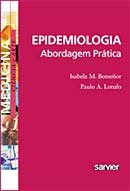 Maria Inês Azambuja, professora da Universidade Federal do Rio Grande do Sul, persegue há vários anos a hipótese de que a epidemial de influenza determinou o pico de doença coronariana quatro décadas depois. Na figura, dados de Massachusetts, Estados Unidos. Abaixo, o resumo do seu artigo que poderá ser requisitado na íntegra para miazambuja@terra.com.br.
Maria Inês Azambuja, professora da Universidade Federal do Rio Grande do Sul, persegue há vários anos a hipótese de que a epidemial de influenza determinou o pico de doença coronariana quatro décadas depois. Na figura, dados de Massachusetts, Estados Unidos. Abaixo, o resumo do seu artigo que poderá ser requisitado na íntegra para miazambuja@terra.com.br.
ABSTRACT In retrospect, mortality from coronary heart disease (CHD) in the 20th century followed an epidemic pattern: mortality rates increased dramatically from 1920 until about 1960, remained roughly constant for almost a decade, and have been decreasing since the late 1960s. CHD has traditionally been conceived of as a single disease with multifactorial causality.We suggest instead that CHD cases may comprise at least two distinct populations: those associated with hypercholesterolemia, and those associated with insulin resistance.The epidemic of CHD was due primarily to changes in the incidence of the hypercholesterolemia subgroup.We propose that young adults who survived the 1918 influenza pandemic were rendered vulnerable to lipid-associated CHD and coronary thrombosis upon reinfection with influenza later in life.This vulnerability may be due to autoimmune disruption of low-density lipoprotein-receptor interactions. Historical events may affect the health of populations by affecting the susceptibility of populations to chronic diseases such as CHD. The life experiences of individuals are known to influence their susceptibility to infectious diseases;we suggest that life experiences may also influence individual susceptibility to chronic diseases.
*Perspectives in Biology and Medicine, volume 50, number 2 (spring 2007):228–42

Nenhum comentário:
Postar um comentário